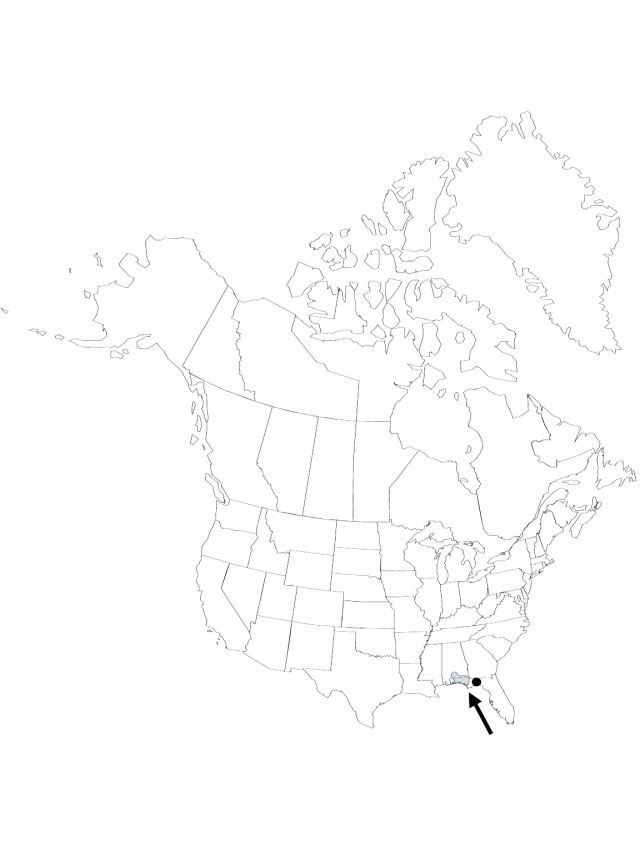Xyris longisepala
Sida 2: 245. 1966.
Herbs, perennial, cespitose, 30–90 cm. Stems compact. Leaves ascending in narrow fans, 6–30 cm; sheaths pinkish, soft, smooth; blade pale green to pale redbrown, narrowly linear, 1–2 (–3) mm wide, smooth, margins smooth. Inflorescences: scape sheaths exceeded by leaves; scapes linear, slightly twisted, nearly terete, 0.7–1 mm, smooth, distally striate or 1-ribbed; spikes ellipsoid to narrowly obovoid, 10–16 mm; fertile bracts 4–6 mm, margins entire, aging to erose, apex rounded. Flowers: lateral sepals exserted, linear-curvate, 0.5–1 mm longer than subtending bract, keel scarious, lacero-ciliate, apex not red, thin, lacero-fimbriate; petals unfolding around noon or in afternoon, blade obovate, 3.5 mm; staminodes bearded. Seeds translucent, ellipsoid, 0.4–0.6 mm, distinctly longitudinally ribbed with few, indistinct cross ribs.
Phenology: Flowering summer–fall.
Habitat: Moist to wet sandy borders of dolines, sandy swales in longleaf pine hills
Elevation: 0–200 m
Discussion
Taxonomically, Xyris longisepala is nearest to X. smalliana, a frequent associate around the dolines. Xyris smalliana is taller, with broader leaves, broader scapes, longer spikes, and longer seeds. The flowering time of day overlaps, but X. longisepala blooms first.
Of conservation concern.
Selected References
None.
Lower Taxa
"thin" is not a number.

